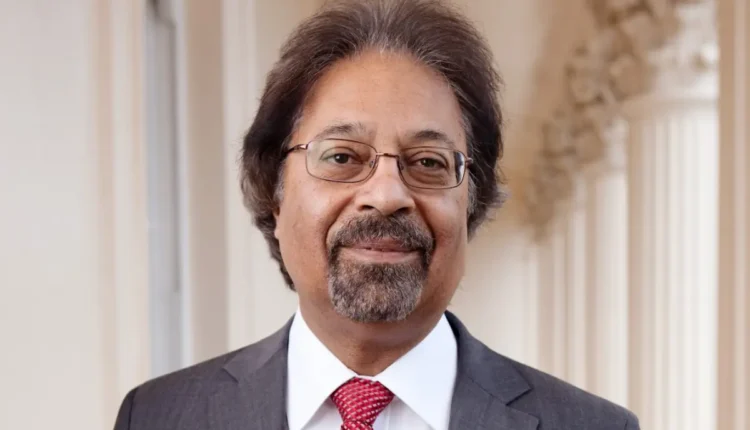Sir Tejinder Singh Virdee, FRS, born on October 13, 1952, in Nyeri, Kenya, to Sikh parents Udham Kaur and Chain Singh Virdee, is a beacon of inspiration in the field of experimental particle physics. His journey from a young boy in Kenya to a renowned physicist in the UK is a testament to his unwavering dedication and brilliance.
Tejinder Singh Virdee’s early life in Kenya, coupled with his family’s relocation to Birmingham, England, in 1967, set the stage for a future filled with scientific discovery and innovation.
A Spark Ignites: The Early Years of Tejinder Singh Virdee
Virdee’s fascination with physics began at King’s Norton Boys’ School in Birmingham, where his physics teacher, Howard Stockley, played a pivotal role in nurturing his interest.
Visits to the Birmingham Museum of Science and Industry further fueled his curiosity, particularly an encounter with a cloud chamber that left a lasting impression. This early exposure to the wonders of science laid the foundation for Virdee’s future endeavors.
Virdee pursued a B.Sc. in Physics from Queen Mary College, University of London, in 1974. His academic journey continued with a Ph.D. at Imperial College London, focusing on experiments at the Stanford Linear Accelerator Center (SLAC) in California. These formative experiences honed his skills and prepared him for the challenges and triumphs that lay ahead.
The Birth of the Compact Muon Solenoid
In 1979, Tejinder Singh Virdee joined CERN as a Fellow of the Experimental Physics Division, embarking on a career that would change the landscape of particle physics. His early work involved verifying the fractional electric charge of quarks, a groundbreaking achievement in the mid-1980s.
This period of his career also saw the development of high-performance calorimetry techniques, leading to his innovative method of collecting light in plastic scintillator-based calorimeters.
The late 1980s marked a turning point in Virdee’s career. Along with a few colleagues, he began conceptualizing an experiment that would become the Compact Muon Solenoid (CMS) at the Large Hadron Collider (LHC).
This monumental project aimed to identify the missing elements of the Standard Model and explore the physics of the TeV scale. Since its inception in 1991, CMS has grown into a worldwide collaboration with over 3,500 participants from 45 countries, and Virdee has been a driving force behind its success.
A Legacy of Innovation and Discovery
Tejinder Singh Virdee’s contributions to CMS are vast and varied. From conceptual design and intensive R&D to prototyping, construction, and commissioning, he has been instrumental in every phase of the project.
His pioneering work in calorimeter technologies, particularly the use of lead tungstate scintillating crystals for the electromagnetic calorimeter, was crucial in the discovery of the Higgs boson in July 2012. This discovery confirmed the existence of the Higgs-like particle, a milestone achievement in the field of particle physics.
As deputy project leader of CMS from 1993 to 2006 and project leader (Spokesperson) from 2007 to 2009, Tejinder Singh Virdee oversaw the final stages of construction, installation, and data taking with the first collisions at the LHC. His leadership and vision have been pivotal in the success of CMS, and he continues to advocate for the long-term future of the LHC and its experiments.
Recognizing Excellence: Awards and Honors
Tejinder Singh Virdee’s groundbreaking work has earned him numerous accolades and honors. In 2012, he was elected Fellow of the Royal Society and the Institute of Physics.
His contributions to high-energy particle physics have been recognized with the IOP High Energy Particle Physics group prize (2007), the IOP Chadwick Medal and Prize (2009), and the 2013 Special Breakthrough Prize in Fundamental Physics. The latter was awarded for his leadership in the scientific endeavor that led to the discovery of the Higgs-like particle.
Additional honors include the 2013 European Physical Society High Energy and Particle Physics Prize, the 2017 American Physical Society Panofsky Prize, and the 2020 Blaise Pascal Medal of the European Academy of Sciences in Physics. In 2014, Virdee was knighted in the Queen’s Birthday Honours list for his services to science, solidifying his legacy as a pioneering physicist.
Beyond the Lab: Promoting Science and Education
Sir Tejinder Singh Virdee’s influence extends beyond his groundbreaking research. He is a passionate advocate for science and education, particularly in Africa. His commitment to promoting scientific literacy and fostering a new generation of scientists is evident in his funding of science-related education activities in schools and universities across Africa, India, and the United Kingdom.
Virdee’s involvement in the Physical Sciences jury for the Infosys Prize in 2020 highlights his dedication to recognizing and nurturing scientific talent. His efforts to replace the CMS detector’s endcaps with novel silicon-based technology underscore his commitment to pushing the boundaries of what is possible in particle physics.
Also Read:Ashok Venkitaraman: A Leader in Cancer Science and Early Intervention

